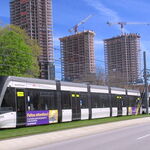Bureaucromancer
Active Member
They’ve never been very clear about it publicly, but all indications are that ignoring FRA specs for properly double stack compatible electrification doesn’t appease them.@smallspy I assume part of the issue here is that CN infra is cleared to plate K (for autoracks) and inserting plate H electrifIcation downgrades the route? Aside from clearance, do the freight roads have other objections, like “servicing and fault repair of the electrical gear will cause increases in track downtime”?




